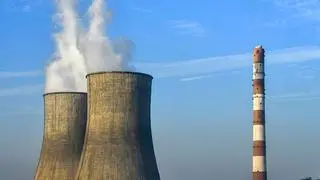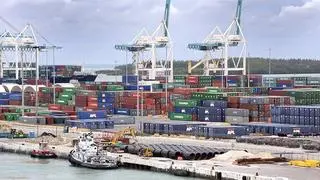Indian Institute of Technology (IIT), Madras' prima facie confirmation that a natural evaporator would be a viable alternative to the mechanical evaporator for treating the RO reject of the textile industry could bring solace to the dyeing units in Tirupur, which are today fighting for survival.
It may be recalled that the Madras High Court had directed the dyeing and bleaching units in Tirupur to close operations in late January this year for polluting the Noyyal river.
The Court had stated that these units would not be permitted to resume operations till they achieved zero liquid discharge.
Industry insiders say that the dyeing and bleaching operations in Tirupur region had come to a near halt in the last two months.
Quite a few voiced apprehension about the state of affairs of the knitwear garment sector itself.
And it was not just the fear of closing shop. The closure meant job-loss to as many as 50,000 – 60,000, who were engaged directly, and another 6-lakh indirectly, apart from investments going down the drain.
Industry insiders, who earlier expressed conviction about the zero discharge concept, later admitted that it would be impossible to achieve zero discharge. “It is possible at the lab stage, but not when put to commercial practice,” an industry spokesperson told Business Line a few days ago.
The industry has been under attack for polluting the river source for over a decade now. And each time, they would move Heaven and Earth to find a solution to this issue, seek Government help to bail them out of the crisis.
Since most of these units are either family-owned, tiny or run by a set of people who do not have access to technology, their woes impacted the industry's growth .
“Evaporation of concentrated brine solution has been the stumbling block in achieving zero liquid discharge of effluent in dyeing industry,” said NIFT-TEA Knitwear Fashion Institute Chairman, Mr Raja Shanmugham.
He conceded that the conventional mechanical evaporator being used by individual and Common Effluent Treatment Plants (CETPs) was flawed and there were difficulties in evaporating the requisite quantity of effluents.
“It was at this juncture that we came to know that a technology was used in Germany to evaporate the RO reject emanating from dyeing units. A team from NIFT-TEA research division visited Germany to carry out a feasibility study. A pilot plant was installed here and trail run conducted,” he said.
“The result was convincing, positive. Thereafter, we made a presentation to the powers that be, enlightening them about the Eco-Green Industrial Evaporator,” the NIFT-TEA Chairman said, highlighting the advantages of the EGIE and maintaining that this is set to become the permanent solution to the perennial pollution problem faced by the industry in this region.








Comments
Comments have to be in English, and in full sentences. They cannot be abusive or personal. Please abide by our community guidelines for posting your comments.
We have migrated to a new commenting platform. If you are already a registered user of TheHindu Businessline and logged in, you may continue to engage with our articles. If you do not have an account please register and login to post comments. Users can access their older comments by logging into their accounts on Vuukle.